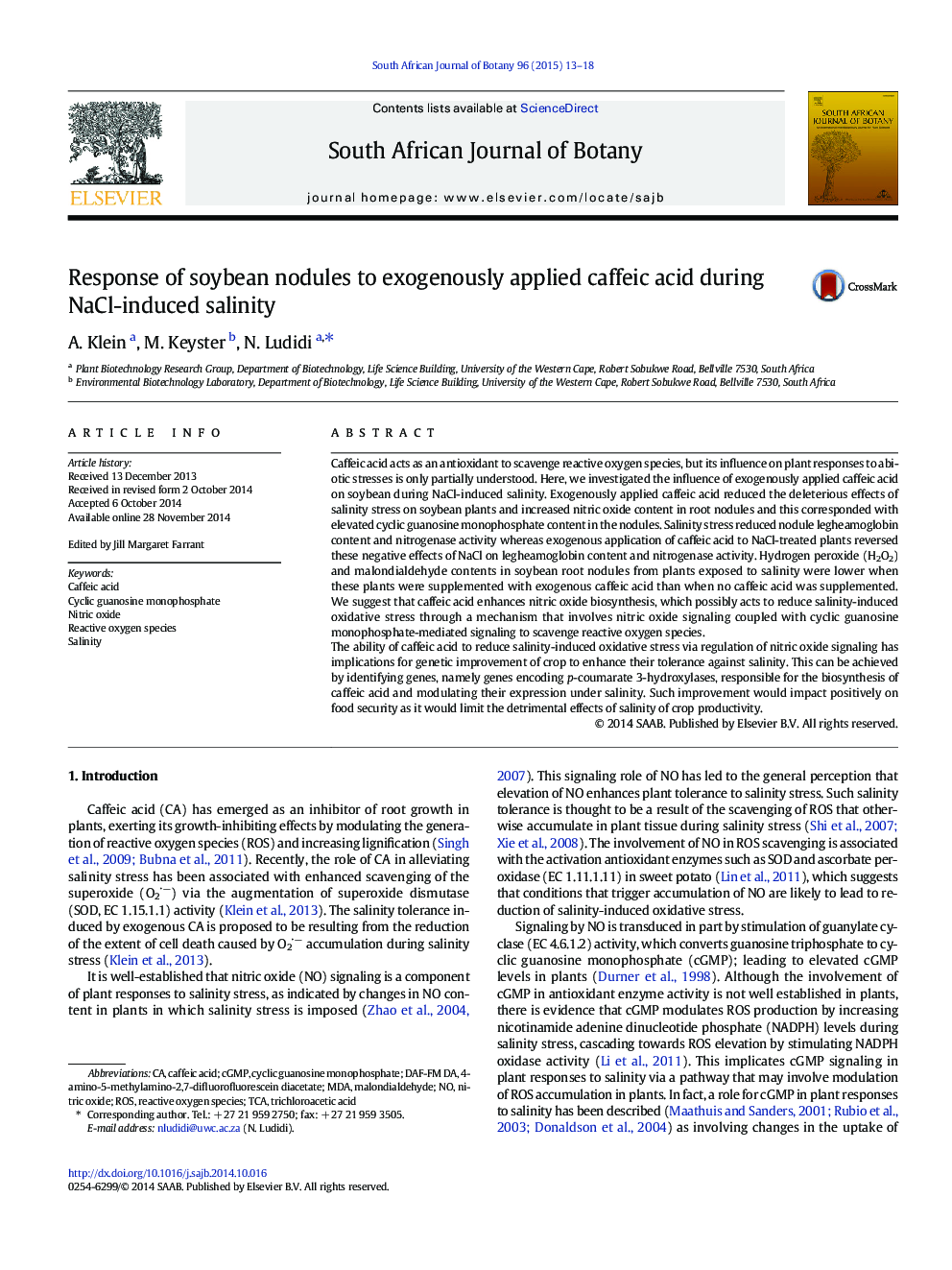| کد مقاله | کد نشریه | سال انتشار | مقاله انگلیسی | نسخه تمام متن |
|---|---|---|---|---|
| 4520585 | 1625162 | 2015 | 6 صفحه PDF | دانلود رایگان |

• Exogenously applied caffeic acid alleviates salinity-induced growth inhibition in soybean shoots.
• Supplementation of caffeic acid to soybean plants grown under salinity conditions prevents salinity-induced chlorophyll loss.
• Exogenously applied caffeic acid increases nitric oxide and cyclic guanosine monophosphate content in root nodules.
• Supplementation of caffeic acid to soybean averts salinity-induced inhibition of nitrogen fixation.
• Exogenously applied caffeic acid reduces salinity-induced reactive oxygen species generation.
Caffeic acid acts as an antioxidant to scavenge reactive oxygen species, but its influence on plant responses to abiotic stresses is only partially understood. Here, we investigated the influence of exogenously applied caffeic acid on soybean during NaCl-induced salinity. Exogenously applied caffeic acid reduced the deleterious effects of salinity stress on soybean plants and increased nitric oxide content in root nodules and this corresponded with elevated cyclic guanosine monophosphate content in the nodules. Salinity stress reduced nodule legheamoglobin content and nitrogenase activity whereas exogenous application of caffeic acid to NaCl-treated plants reversed these negative effects of NaCl on legheamoglobin content and nitrogenase activity. Hydrogen peroxide (H2O2) and malondialdehyde contents in soybean root nodules from plants exposed to salinity were lower when these plants were supplemented with exogenous caffeic acid than when no caffeic acid was supplemented. We suggest that caffeic acid enhances nitric oxide biosynthesis, which possibly acts to reduce salinity-induced oxidative stress through a mechanism that involves nitric oxide signaling coupled with cyclic guanosine monophosphate-mediated signaling to scavenge reactive oxygen species.The ability of caffeic acid to reduce salinity-induced oxidative stress via regulation of nitric oxide signaling has implications for genetic improvement of crop to enhance their tolerance against salinity. This can be achieved by identifying genes, namely genes encoding p-coumarate 3-hydroxylases, responsible for the biosynthesis of caffeic acid and modulating their expression under salinity. Such improvement would impact positively on food security as it would limit the detrimental effects of salinity of crop productivity.
Journal: South African Journal of Botany - Volume 96, January 2015, Pages 13–18